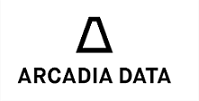 Arcadia Data, provider of the visual analytics software native to Apache™ Hadoop® and the cloud, today announced it has integrated the Mapbox GL vector mapping technology, enabling more granular visual geospatial analytics on data of a global scale, necessary for use cases such as IoT analytics, climate analysis, disease tracking, and car and fleet tracking. The integration delivers the power of advanced geospatial analytics capabilities in an easy-to-use, fully-featured business intelligence (BI) platform architected for data lakes and for all users. Mapbox GL’s GPU-based rendering engine combined with the recently announced GPU-accelerated visualization by Arcadia Data creates the perfect blend of performance and scale in the hands of its users.
Arcadia Data, provider of the visual analytics software native to Apache™ Hadoop® and the cloud, today announced it has integrated the Mapbox GL vector mapping technology, enabling more granular visual geospatial analytics on data of a global scale, necessary for use cases such as IoT analytics, climate analysis, disease tracking, and car and fleet tracking. The integration delivers the power of advanced geospatial analytics capabilities in an easy-to-use, fully-featured business intelligence (BI) platform architected for data lakes and for all users. Mapbox GL’s GPU-based rendering engine combined with the recently announced GPU-accelerated visualization by Arcadia Data creates the perfect blend of performance and scale in the hands of its users.
The flagship Arcadia Data offering, Arcadia Enterprise, shows micro-segmented geographical boundaries in visual analytic dashboards. Users can visualize geospatial shapes that segment regions into various demographic parameters, such as socioeconomic factors and geopolitical conditions. Arcadia Data enables much more granular location analytics because of its ability to handle data at scale, allowing users to query billions of rows that represent millions of geospatial shapes.
Geospatial visualizations were previously limited by traditional technologies that could not scale to the data volumes and granularities that enterprises require today; the Arcadia Data and Mapbox integration changes all that,” said Priyank Patel, co-founder and chief product officer, Arcadia Data. “We are excited about this advanced capability for our customers. It combines powerful mapping capabilities from Mapbox with our big data architecture to create an analytical environment free of the prior constraints of visualizing geospatial data. We look forward to working with Mapbox to further help customers with their geospatial analytics requirements.”
According to Gartner, “By 2022, 30% of customer interactions will be influenced by real-time location analysis, up from 4% in 2017.”[1] With the new offering from Arcadia Data, users enjoy greater detail and interactive analysis on location intelligence data. Arcadia Data is built natively for a data lake architecture and works directly with data lake technologies that support fast-moving data, including Apache Kafka, Apache Solr, and Apache Kudu. Arcadia Data enables users to view data points on the map in real time to get dynamic, up-to-the-second updates on changing data sets. The solution provides the following features and benefits to users:
- Extreme scale and granularity lets users analyze query results with billions of records, representing millions of geospatial shapes that delineate geographical boundaries. Unlike other technologies that have significant limitations on the number of shapes, this solution enables granular location analytics on smaller defined regions.
- Dynamic map rendering on live data via server-side calculations provides the flexibility to quickly view different metrics on different segments, as well as recent updates on the underlying data. Unlike static mapping techniques, this allows users to immediately explore data with no IT intervention and no delay.
- Real-time geospatial analytics lets users view continually changing metrics on maps using data from data lake technologies that support fast-moving data such as Apache Kafka, Apache Solr, and Apache Kudu.
- Support for custom shape files in Mapbox, giving users the ability to upload custom shape files and dynamically bind data for greater range on the types of visualizations they can analyze, unlike other systems that only support fixed map shapes.
For example users can now visualize data with ZIP+4 or carrier router boundary data. In addition, a user can upload custom shape files into Mapbox Studio, define unique shapes like warehouses or network relay switches, assign custom IDs to those shapes, and within Arcadia Data dynamically render and manipulate those shapes based on the data sources in use.
Arcadia Data’s maps and location integration unlocks totally new experiences for BI, like monitoring nationwide cellular networks at the building level in real time,” says Matt Irwin, Director of BI at Mapbox. “Arcadia Data’s fast, data-driven maps show the power of their big data architecture and offer users immediate insights from massive amounts of spatial data. We’re excited to be partnered with the Arcadia Data team to expand what’s possible with location intelligence.”
[1] Gartner: 100 Data and Analytics Predictions Through 2022; Douglas Laney, Guido De Simoni, Rick Greenwald, Cindi Howson, Ankush Jain, Valerie Logan, Alan D. Duncan; 21 May, 2018
Sign up for the free insideBIGDATA newsletter.




Speak Your Mind